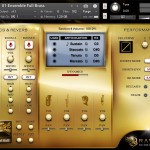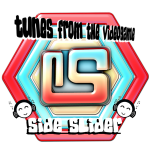String instruments have always been a difficult sound to faithfully capture.
Audiobro’s LA Scoring Strings (affectionately referred to as ‘LASS’) has become an industry standard for scoring–and one of the standard tools in media composers’ collective belt when it comes to string sampling. But how does it really stack up? I’ve had some time to play with my copy of LASS Lite.
Check out my review after the jump!
Realism is a priority for many home studio composers. While infinitely better to hire live orchestras or a live horn player and record them in a studio setting, it is usually not cost-effective for low- and even many mid-size productions. So how do composers get around this?
Enter sample-based VSTi’s. These sample libraries are collections of sampled that have been layered and programmed to be playable on a keyboard like any synth-based program. Sample-based VST’s can often become pricey, while still maintaining a steep learning curve to make the instruments sound real. In the past few years though, we have had breakthroughs in this sector with highly-playable orchestral VST’s such as VSL, Symphobia, and now LASS. So let’s jump right to it. What sets LASS apart from the competition?
First off, the sound is absolutely gorgeous. Out of the box. Without even adjusting individual EQ’s, advanced humanization options, or adding in insert or bus fx, the sound is rich and deep, capturing all the intricacies of live strings. You can hear important details such as the ‘graininess’ of the bows as they slide across the bridge or the slight variations in tuning that you get from an ensemble. That said, the sound is distinct and unique from other string libraries… which poses both an upside and a downside. The upside of a unique sound is that it brings a new dimension to your music–which is certainly a big upside. The downside is that the library is easily recognizable. Admittedly, this is not really a problem from the audience’s point of view until everybody (including amateur musicians) start using LASS.
LASS has implemented an auto-arrange system, which provides a brilliant mechanic for orchestrators. Once activated, the auto-arrange system restricts polyphony to one note per instrument. This is particularly effective for the legato, sordino, and tremolo articulations and provides a simple and straight-forward execution. Essentially you are writing 5-part harmonies here. The big win with auto-arrange is that the transitions from note-to-note are much more realistic than most competitor libraries. That said, there is an issue with auto-arrange. When two notes in the same MIDI channel overlap, rather of playing the latter note, the system instead mutes the second note altogether. This creates an issue of having to go back and check to make sure that every note in your track gets triggered–not an efficient use of one’s time. Really, this should be treated the same what monophonic synths work… trigger the latest note to be played.
The glissando system has been developed very intelligently in LASS. The gliss timing and intensity from note-to-note depends on a couple of factors–sustain and note velocity. The idea is that glissandi occur when the note velocity is below a certain threshold: thus glissandi are naturally a soft glide from one note to the next. The system makes note and chordal movements sound VERY convincing. I’ll go further; in my opinion, this system should be standardized in all high-end string libraries.
LASS also feature Humanization functionality. The idea behind the humanizer controls is simple: human performance is imperfect–there are tonal, rhythmic, even tuning imperfections in live performances. In fact, one of the hardest parts of programming high-quality music generated by VST’s is creating that human element of imperfection. Well, Audiobro has decided to include dedicated humanization filters that affect various components of the performance. You can control each of these. A series of virtual knobs calculates how imperfect the performance of each part is. It’s a great idea–and elegantly executed.
So let’s get keyswitching already… right? Wrong. That’s right, there’s NO keyswitching. What does this mean? Well, whereas with other libraries, such as the Kontakt 4 strings, you can switch articulations on an instrument with a simple keyswitch, with LASS no such feature is available. You have to load each articulation for each instrument separately. Why is this a major gripe for me? Well, instead of loading 5 tracks… let’s say:
Basses
Cellos
Violas
Violins I
Violins II
Now you have to load 30+ tracks. You read that right… at least THIRTY tracks to get the same articulations as the above five. You’d need to load:
Spiccato Violins I
Spiccato Violins II
Spiccato Violas
Spiccato Cellos
Spiccato Basses
Legato Violins I
Legato Violins II
etc.
This is a big issue for me. My workload has changed from dealing with 5 tracks to managing a massive 30+ track project. I hope Audiobro considers keyswitching functionality for future releases. It really makes a difference.
Additionally note timing is an issue with LASS. This was an unexpected and unpleasant surprise. The samples are built with preverb and ambience that kicks in right before the note is played. While this creates a much more robust sound, it adds a manual component to the programming. You actually have to take the midi note stems and move them further up in the timeline to account for the delay in timing. This is a big issue. Many composers rely on quantization to ensure timing and accurate score transcriptions. In essence, the quantize function is almost completely irrelevant here. There needs to be a solution developed for this. This process of manually moving each note to account for delay creates too much extra work.
So given all these pro’s and cons, would I recommend purchasing LASS Lite? Perhaps. This VSTi is not an easy ‘plug and play’ sample set to use the way Miroslav, Eastwest, Edirol, etc. are. There is a lot of manual work that has to be put into the programming to make it sing–much more work than peer VSTi’s. That said, if you’re willing to put in the work and time the end result is truly gorgeous.
I would recommend LASS to orchestrators or composers with an orchestration background. If you do not regularly write/produce orchestral music, I would go with an easier library to use. For die-hard orchestral writers, this program is more work than your average string library, but the results are great. If it’s any indicator, I fully plan to upgrade to the complete version of LASS.
For more details and a demo sample of LA Scoring Strings, be sure to check out my YouTube Video Review of LASS!
So what do you think? Does LASS stack up to the praise of being an industry-standard?
Tags: Audiobro, LA Scoring Strings, LASS, Music Reviews, Orchestral, Reviews, Strings








































Kunal,
Check out the LASS forums at audiobro.com. There are numerous kontakt patches there that other users have uploaded that accomplish either key-switched or program changed articulations. I personally find LASS *way* easier to use than EWQLSO.
Also, I respectfully disagree that LASS has an instantly-recognizable sound. It has way less of a sonic-footprint than EWQLSO and VSL — I think it strikes a perfect balance between sounding great and still having plenty of mixing flexibility. Also, with LASS full, you can change the relative volumes between each of your “divisi sections”, which each contain a dramatically different timbre.
Anyway, thanks for the review!
Cheers,
Eric
Can I use LASS on Receptor and Kurzweil pc3x as my controller? Can it be used live with polyphony noy using a sequencer?